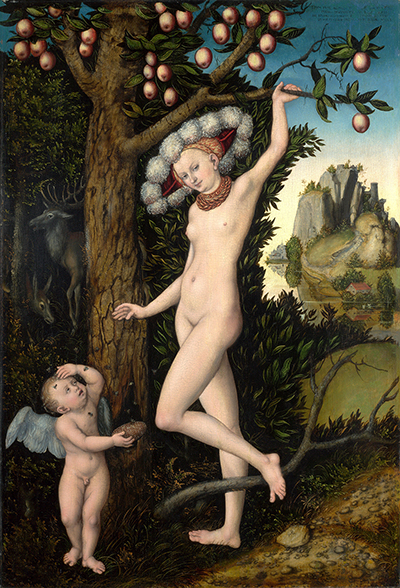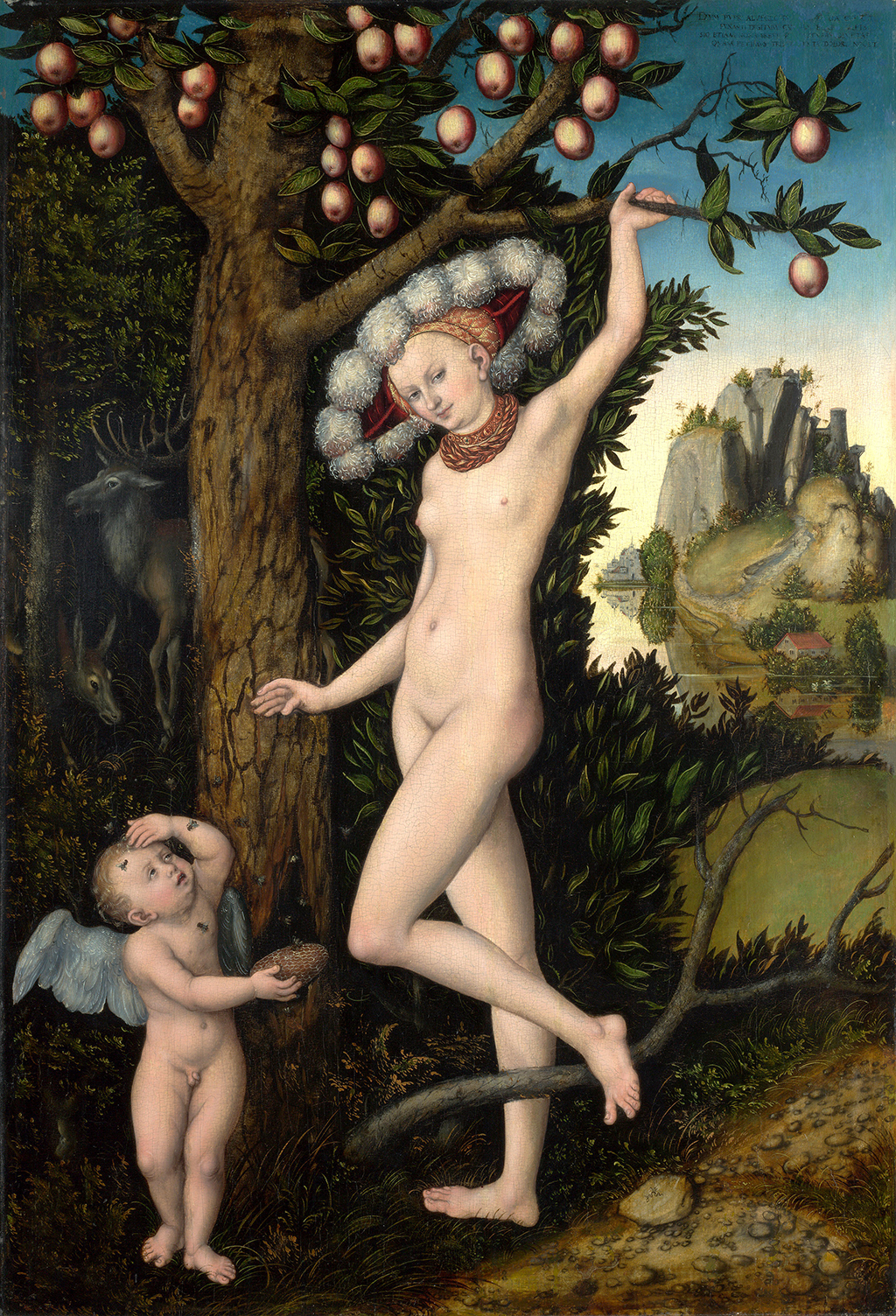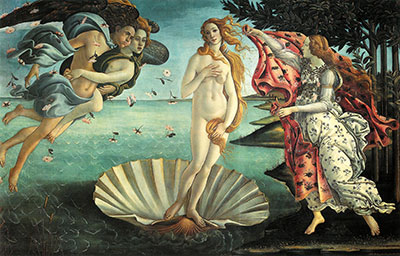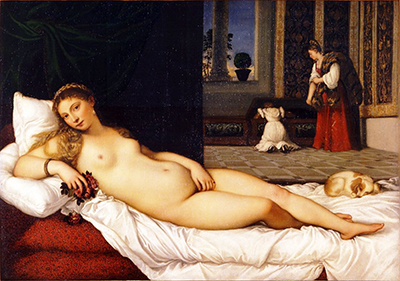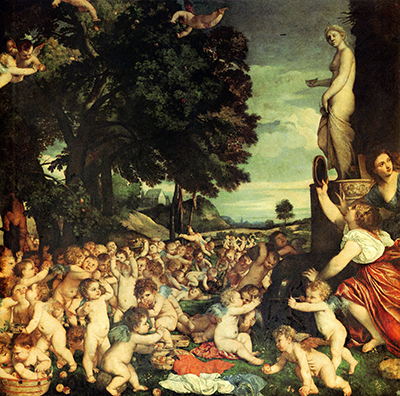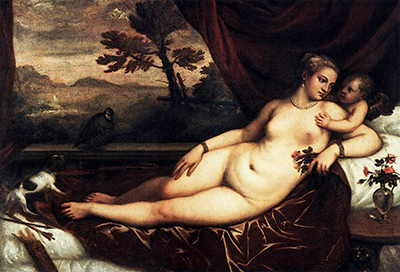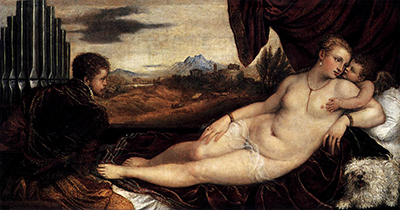Lucas Cranach the Elder and his workshop produced approximately twenty different interpretations of the theme that you find here - Cupid Complaining to Venus, with them all being relatively similar to the painting that you find here.
Cupid Complaining to Venus, or at least this version, is dated at 1526-7. It draws together two gods of love in a powerful piece that also uses content from other Cranach paintings to create an overall composition that is immediately recognisable as his own. For example, the rosy red apples are a popular inclusion for this artist, and a particularly welcome addition, bringing a beautiful splash of colour to his darkened trees and foliage. He did the same in Adam and Eve (1526). The two figures here stand either side of a dominant trunk, with the healthiest parts of the plant sitting above them. There is also a stag and hind to be found hiding amongst the forest. To the right is a pretty backdrop, with a single hut set within its own farm, whilst a mountain range sits behind. These features offer us a painting with much to see and levels of detail going back a long way from the nearest elements that first catch your eye.
Some have referred to this painting with the alternative title of Venus with Cupid as a Honey Thief. There was aactually a poem of a similar name from ancient Greece which probably inspired this artwork. The complaining is specifically due to insect stings, whilst Venus laughs at these concerns. Mythology and literature from past cultures have inspired artists for many centuries, not just painting but also sculpture too. There are also theories, with some evidence to back them up, that the idea was actually suggested to him by a patron who themselves had come across the ancient greek texts, with them having recently been translated into German at about the same time.
Whilst there are many different versions from himself and also his wider workshop, the photograph pictured here is of the version found at the National Gallery in London, UK. It is believed to have been probably the very first of them all, and is also one of the most detailed. Other notable versions can be found at the Galleria Borghese in Rome, Italy and the Hermitage Museum in St Petersburg, Russia. The National Gallery purchased its version as recently as 1963, meaning that it has only been in its possession for just over half a century. This particular institution's collection focuses on art that arrived before the movements that we loosely group under the banner of modern art, thus capturing the Renaissance, Baroque and Romanticist periods most prominently. Beyond this magical piece from Cranach you can also find some notable pieces from the likes of Titian, Caravaggio, Rubens and Turner.



